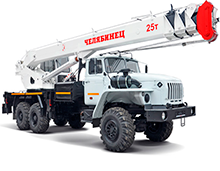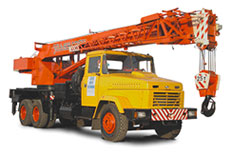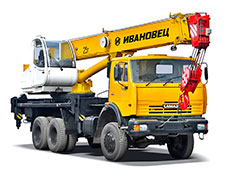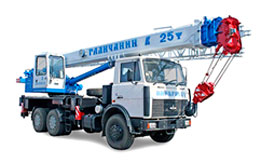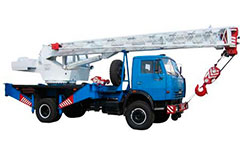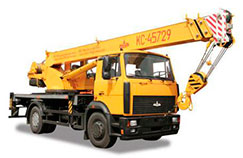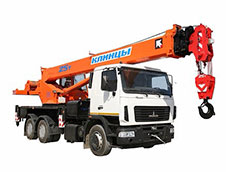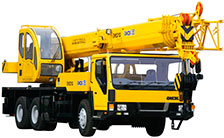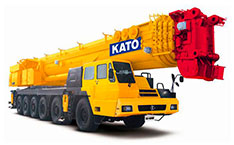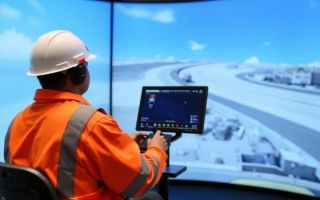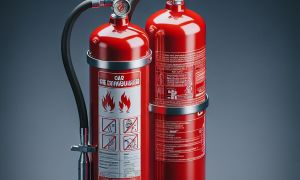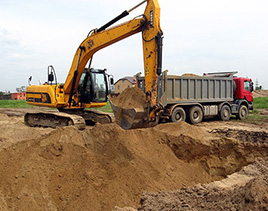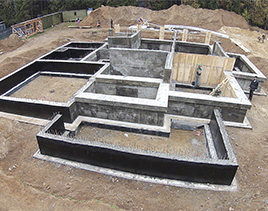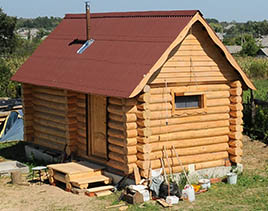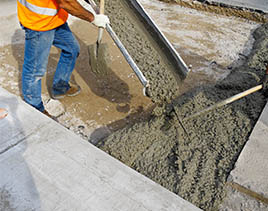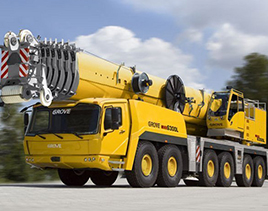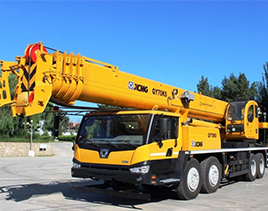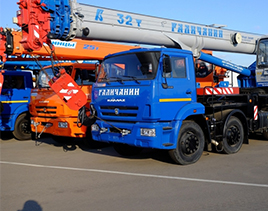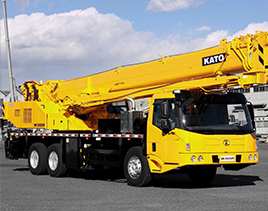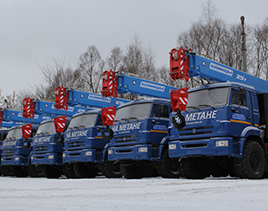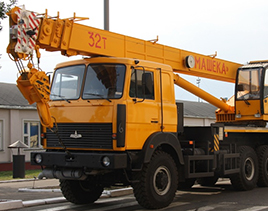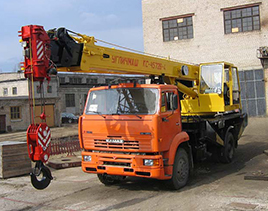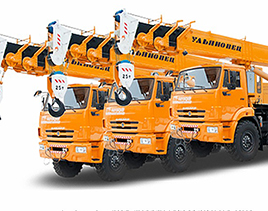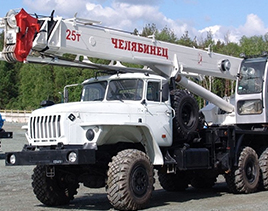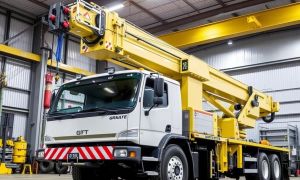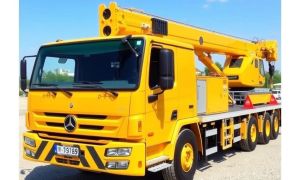Mobile cranes are essential for a wide range of construction, industrial, and infrastructure projects. However, operating these powerful machines demands precision, skill, and above all, safety. Simulator training for mobile crane operators has emerged as a game-changer in developing these critical competencies. If you are involved in crane operations or safety management, understanding the benefits, methodology, and future of this training approach could transform how you think about training and certification.
Why Simulator Training for Mobile Crane Operators is Important
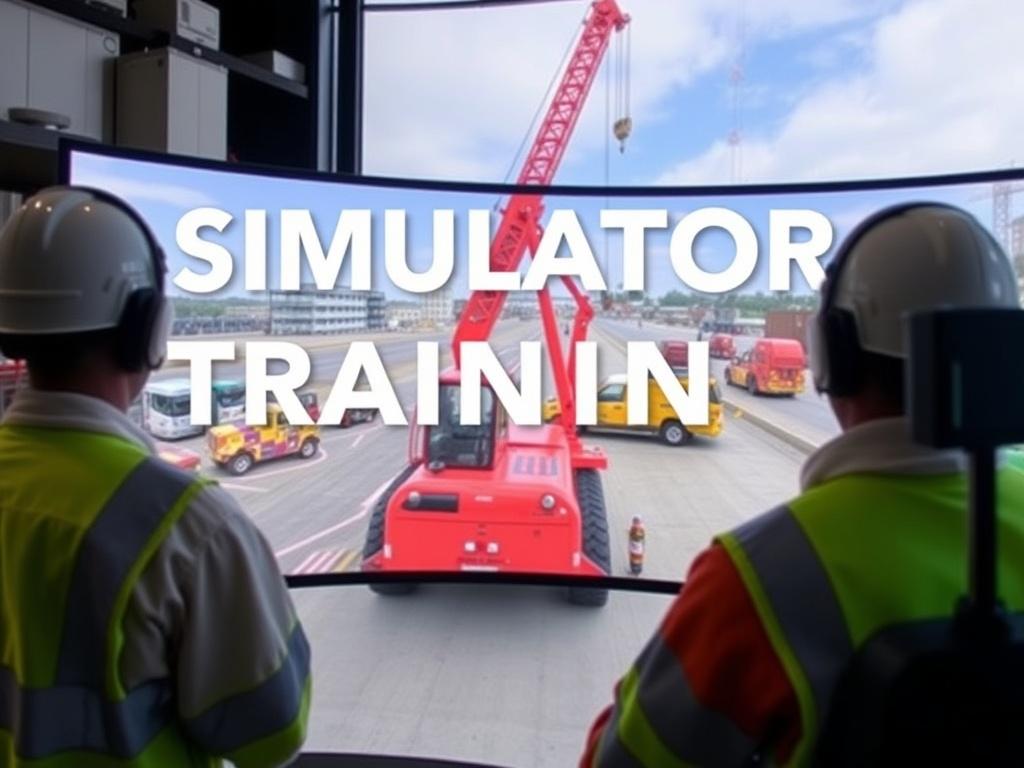
Operating a mobile crane is no simple task. It involves not only controlling the heavy equipment but also understanding load charts, rigging, environmental conditions, and the physical surroundings. Traditional training methods often involve classroom instruction coupled with on-the-job training. While effective to some extent, this conventional approach has limitations. It exposes operators to real-world risks during skill acquisition and can sometimes fail to replicate the dynamic challenges faced on job sites.
This is where simulator training for mobile crane operators shines. Using virtual reality (VR) and advanced computer simulations, operators can practice in a controlled, zero-risk environment. The simulator replicates the controls, reactions, and scenarios of an actual mobile crane—allowing the trainee to experience everything from normal load handling to emergency situations like equipment failure or unexpected environmental conditions.
The Evolution of Crane Operator Training
Historically, crane operator training was an apprenticeship model—learners worked under the strict supervision of experienced operators for months or even years. Though hands-on experience is invaluable, the risks are significant, and mistakes can lead to catastrophic accidents, injuries, or fatalities.
Classroom-based theory took a foothold to address knowledge gaps but sometimes lacked practical engagement. As technology advanced, companies started using simple desktop simulators, which gradually evolved into sophisticated full-motion simulators with VR immersion.
Today, simulator training for mobile crane operators integrates cutting-edge graphics, physics engines, and real-time feedback, creating an immersive and thorough training environment. This progress reflects a growing emphasis on safety and operational excellence in the crane industry.
Key Features of Mobile Crane Simulator Training Programs
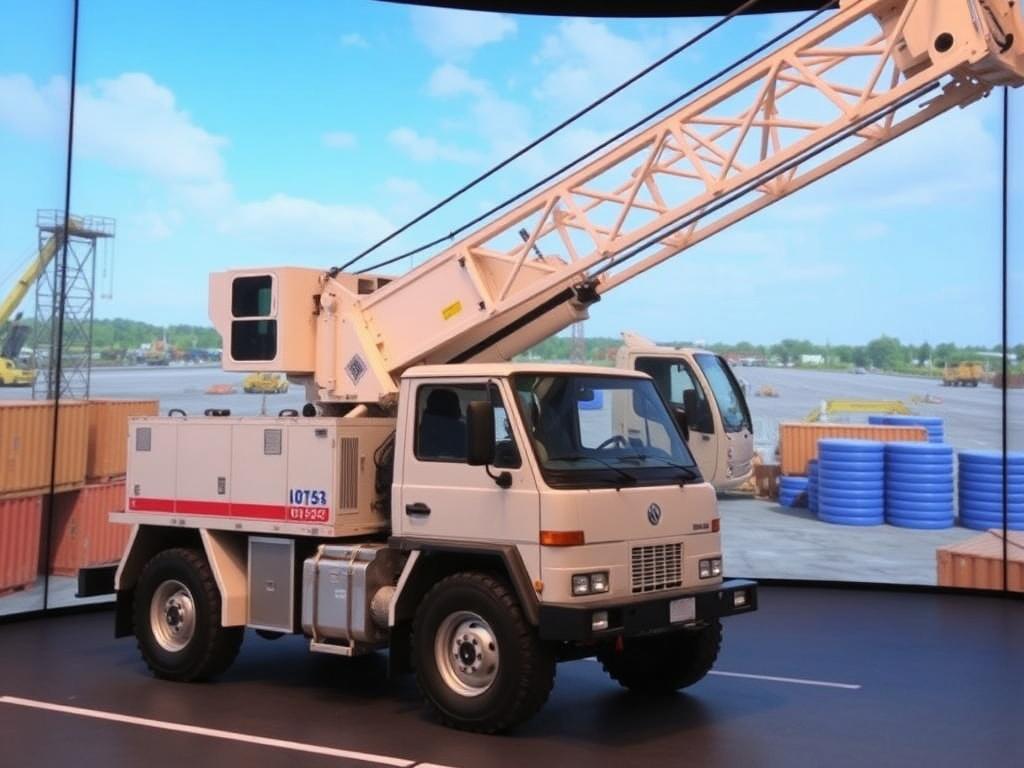
Modern simulator training programs come equipped with features designed to mirror real-world operational conditions. Let’s explore some of the most significant characteristics:
Realistic Crane Controls and Feedback
A well-designed simulator replicates the exact controls found on a mobile crane, including joysticks, pedals, control panels, and safety devices. Haptics and force feedback simulate resistance and vibration, enabling operators to develop a “feel” for the machine without physical presence.
Varied Environmental and Operational Scenarios
Simulators can easily switch between different job site conditions, such as wind speeds, weather types, ground stability, and complex load placements. This variability prepares operators for unexpected challenges, enhancing situational awareness and decision-making skills.
Performance Tracking and Data Analytics
Each simulator session can be recorded and analyzed to identify strengths and weaknesses. Trainee metrics—like reaction times, precision in load handling, and adherence to safety protocols—offer actionable insights for trainers and operators alike.
Emergency and Critical Situations Training
Operators can safely practice responding to dangerous scenarios that would be impossible or too risky to recreate in real life. Simulators can simulate mechanical failures, sudden load shifts, or personnel hazards, empowering trainees to hone emergency protocols.
Benefits of Simulator Training for Mobile Crane Operators
The advantages of simulator training go far beyond just safety. Here are some key benefits that explain why more companies are adopting this modern approach:
| Benefit | Description |
|---|---|
| Enhanced Safety | Eliminates risk during training, allowing for mistake-driven learning without consequences. |
| Cost Efficiency | Reduces expenses related to equipment wear, fuel consumption, and site disruptions during training sessions. |
| Accelerated Learning Curve | Provides immediate feedback and repetitive practice opportunities, speeding up skill acquisition. |
| Standardization | Ensures uniform training quality across operators, regardless of geographic location. |
| Environmental Benefits | Minimizes fuel use and emissions compared to on-site training with actual cranes. |
Simulator training helps companies maintain compliance with regulations while fostering confident and competent operators.
Addressing Common Training Challenges with Simulation
Training operators in the real world isn’t always seamless—cost and logistics can be prohibitive, and unpredictable weather or site limitations often disrupt practice sessions. Simulator training mitigates these challenges by offering a consistent training environment that is accessible at any time. Furthermore, the ability to introduce rare but critical fault scenarios increases preparedness in ways traditional training often lacks.
Types of Simulators for Mobile Crane Operator Training
Not all simulators are created equal, and understanding the types available can help organizations choose the best fit.
- Desktop Simulators: These are software-based solutions run on a computer with basic control peripherals resembling crane controls. Ideal for theoretical and basic practice but less immersive.
- Full-Motion Simulators: Equipped with hydraulic or electric motion platforms, these simulate the physical movement and vibrations of a crane, improving muscle memory and coordination.
- Virtual Reality (VR) Simulators: Using head-mounted displays and hand controllers, VR simulators immerse the operator in a 3D environment, allowing free range of view and interaction.
- Hybrid Systems: Combine motion platforms, real control consoles, and VR to replicate both physical and visual realism to an advanced degree.
Each type offers unique trade-offs between cost, realism, and training outcomes.
Implementing Simulator Training Programs: Best Practices
Organizations looking to introduce or enhance simulator training for mobile crane operators should consider the following best practices:
1. Conduct a Needs Assessment
Identify the training gaps, fleet types, and operator profiles. This helps tailor the simulator programs to specific operational needs.
2. Select the Appropriate Simulator Type
Budget and training objectives will guide the choice, ensuring the simulator matches real equipment and operator requirements.
3. Integrate Simulator Training into Overall Curriculum
Simulation should complement hands-on training and classroom theory—used both as an introduction and for ongoing skill refinement.
4. Train the Trainers
Effective use of simulators requires skilled instructors who can interpret data, provide feedback, and customize scenarios.
5. Regularly Update Scenarios and Software
Keeping content current with new crane models, regulations, and industry standards ensures training remains relevant.
6. Monitor and Evaluate Trainee Progress
Continuous assessment using simulator data drives targeted coaching and certification decisions.
The Future of Simulator Training in Crane Operations
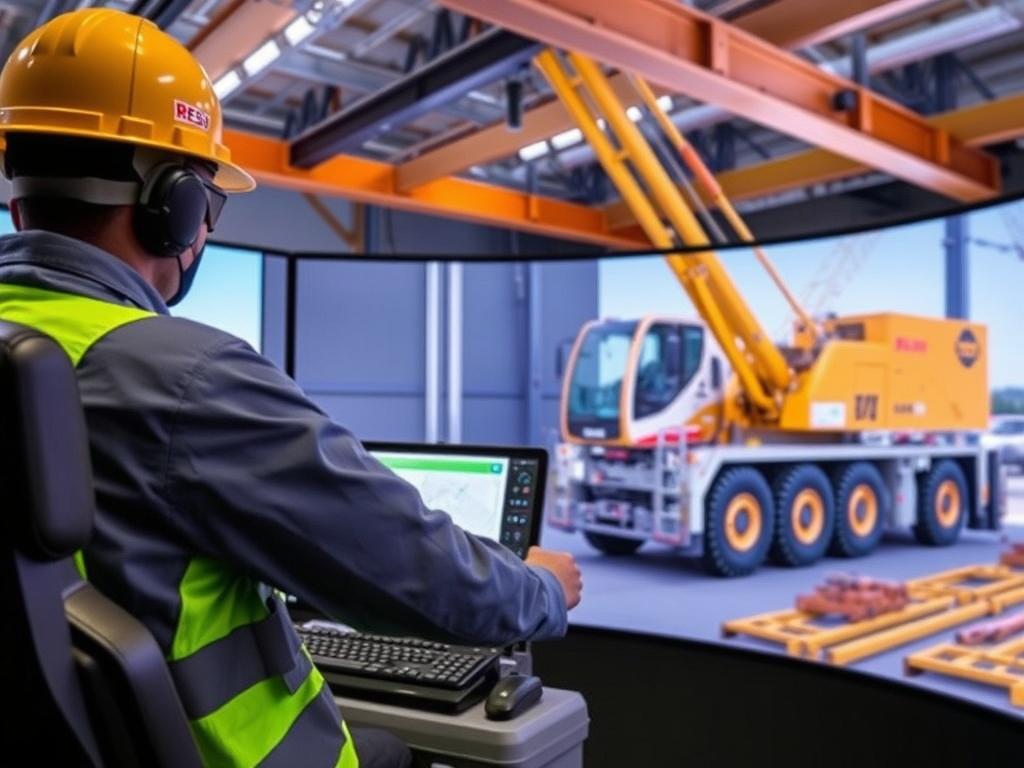
As technology advances, the scope and capabilities of simulator training for mobile crane operators will expand. Artificial intelligence (AI) and machine learning (ML) are beginning to play a role in adapting training scenarios to individual needs and predicting operator performance.
We can anticipate augmented reality (AR) overlays combining real crane operation with simulated data to provide just-in-time training or guidance in the field. Additionally, cost reductions in hardware and software will increase accessibility for smaller contractors and developing markets.
The drive toward zero accidents and optimized productivity positions simulator training as a cornerstone of mobile crane operator development in years to come.
Industry Standards and Certifications Involving Simulator Training
Increasingly, certification bodies and regulatory agencies recognize the value of simulator training as part of formal qualification pathways for mobile crane operators. For example:
- The National Commission for the Certification of Crane Operators (NCCCO) includes simulator-based assessments in some certification programs.
- Occupational Health and Safety (OHS) standards recommend simulation as a method to reduce risk during skill development.
- Some employers and insurers mandate simulator training before granting site access or insuring crane operators.
The integration of simulator training into formal certification frameworks enhances credibility and compliance.
Challenges in Adoption and How to Overcome Them
Despite its benefits, the adoption of simulator training faces hurdles such as upfront costs, resistance to change from traditional methods, and limited familiarity with technology among some trainers or operators.
To overcome these challenges:
- Cost-Benefit Analysis: Demonstrate long-term savings through reduced accidents and equipment damage.
- Pilot Programs: Start with small-scale implementations to showcase effectiveness.
- Stakeholder Engagement: Involve operators, supervisors, and safety managers early to gain buy-in.
- Support and Training: Provide comprehensive training for instructors and refresher courses for users.
Successful integration depends on a thoughtful approach aligned with organizational goals.
Case Studies: Simulator Training in Action
To bring theory to life, here are a few brief examples illustrating simulator training benefits:
- Construction Company A: After adopting VR-based simulator training, this firm reported a 40% reduction in site incidents involving mobile cranes over two years.
- Port Authority B: Implemented full-motion simulators for its crane operators, allowing new hires to qualify faster while maintaining zero safety violations during the process.
- Mining Operation C: Uses desktop simulators for ongoing skill refreshers and emergency drills, cutting down the need for expensive onsite training sessions.
These stories demonstrate how simulation is making a real difference in operator competency and safety cultures worldwide.
Tips for Mobile Crane Operators Using Simulators
If you are an operator engaging with simulator training, here are some tips to maximize your learning experience:
- Take It Seriously: Treat simulator sessions like real operations—practice focus and professionalism.
- Review Feedback Carefully: Use performance reports to identify areas for improvement.
- Ask Questions: Work closely with instructors to understand mistakes and corrective techniques.
- Practice Regularly: Consistent simulator use helps retain skills and update knowledge.
- Familiarize Yourself With Controls: Spend time learning simulator controls to build confidence before transitioning to real cranes.
Approaching simulator training proactively yields long-term dividends for career development and safety.
Summary Table: Simulator Training vs. Traditional Training
| Aspect | Simulator Training | Traditional Training |
|---|---|---|
| Risk | Zero—safe virtual environment | Higher—on-site hazards |
| Cost Over Time | Lower operational costs | Equipment wear and fuel costs |
| Scenario Variety | Wide—can introduce rare situations | Limited by real jobs and safety |
| Feedback | Immediate, data-driven | Subjective, less detailed |
| Accessibility | Available anytime at training center | Dependent on available cranes and site conditions |
Conclusion
Simulator training for mobile crane operators is revolutionizing how skills are developed and safety is ensured in an industry where precision and caution are paramount. By providing realistic, immersive, and zero-risk environments, simulators empower operators to practice complex maneuvers, handle emergency scenarios, and build confidence before stepping into real-world operations. The benefits extend beyond safety to include cost savings, standardized training quality, and improved certification pathways. As technology continues to advance, simulator training will become increasingly accessible and integral to crane operator development worldwide. Whether you’re an operator looking to sharpen your skills or an organization aiming to improve safety outcomes, embracing simulator training offers a clear, forward-thinking path toward operational excellence and accident-free workplaces.

